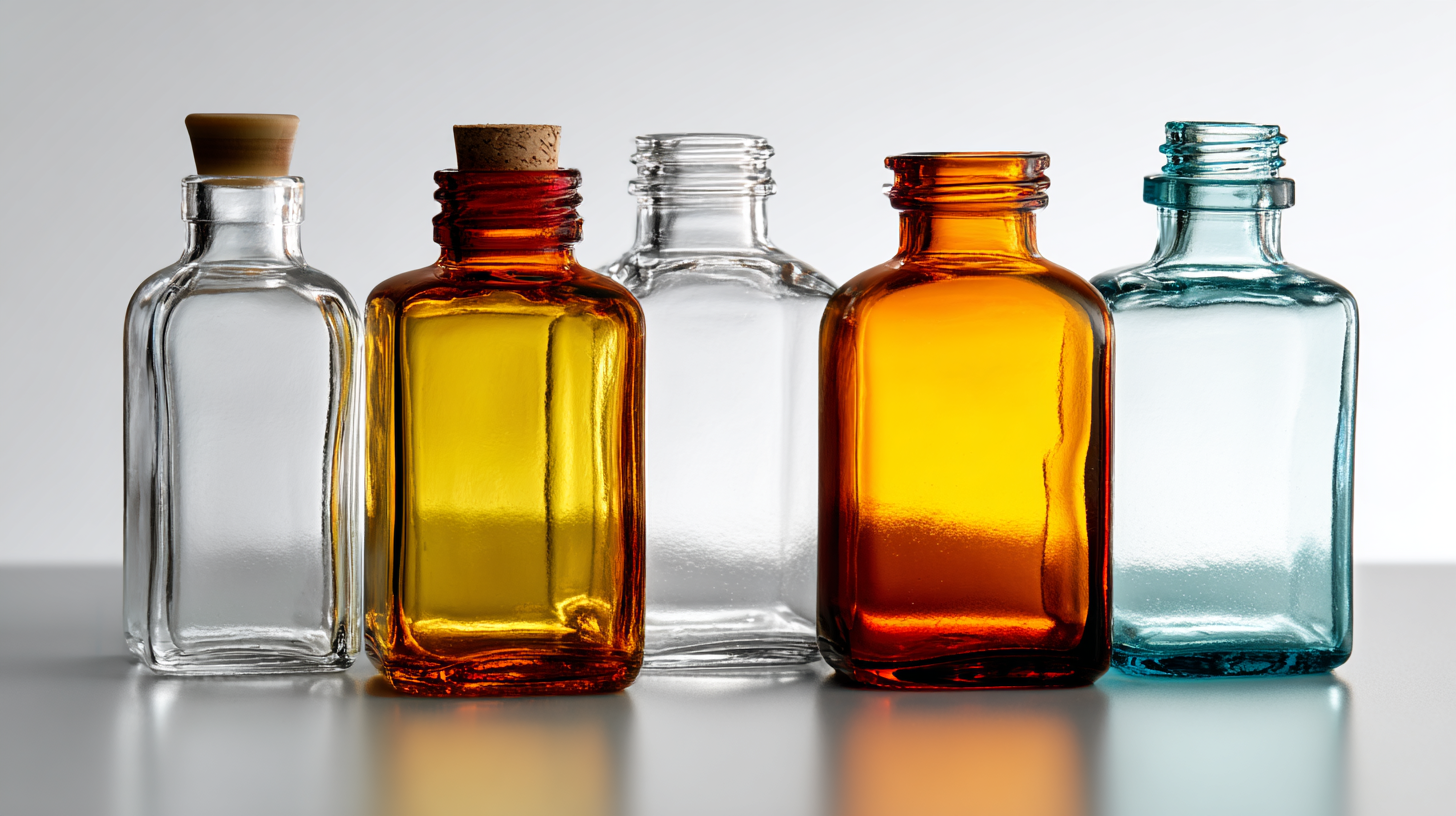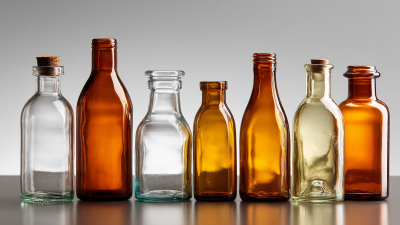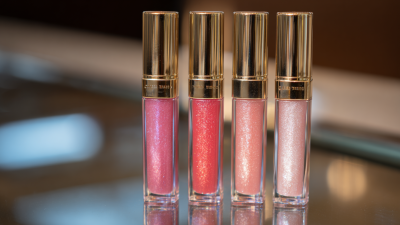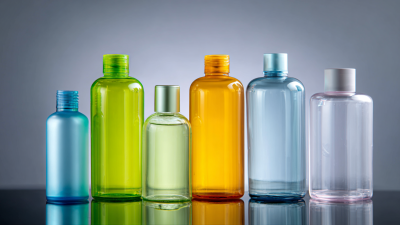
Choosing the Right Packaging for Glass Bottles: A Complete Guide for Eco-Friendly Solutions
In today’s eco-conscious world, the significance of sustainable packaging solutions has never been greater, particularly for industries utilizing Packaging For Glass Bottles. According to a report by Smithers Pira, the global demand for sustainable packaging is projected to reach $500 billion by 2028, highlighting an urgent need for innovation in materials and practices. Glass has always been favored for its recyclability and premium feel, but the right packaging can amplify its environmental benefits. The choice of packaging not only impacts product safety and shelf life but also resonates with increasingly eco-aware consumers. With 67% of buyers expressing a willingness to pay more for sustainable products, companies are incentivized to adopt eco-friendly packaging strategies. This guide aims to equip businesses with insights to select the most suitable and sustainable packaging solutions for their glass bottles, ensuring they meet environmental standards while enhancing brand value.

Understanding the Environmental Impact of Glass Bottle Packaging
The environmental impact of glass bottle packaging is a critical consideration as the world moves towards sustainable practices. Glass is a highly recyclable material, which means that its lifecycle can be extended significantly through effective recycling programs. When recycled, glass can be repurposed into new bottles and containers without losing quality, greatly reducing the need for raw materials and energy consumption compared to producing new glass. However, the journey of a glass bottle does not end with its recycling; companies must also consider the emissions generated during production, transportation, and disposal phases.
Selecting eco-friendly packaging solutions involves examining not just the glass itself, but also the entire supply chain. Responsible sourcing of materials, reduction of packaging weight, and utilizing locally-sourced components can diminish environmental footprints. Innovations such as lightweight glass and biodegradable labels enhance the sustainability of glass packaging while maintaining its aesthetic appeal. Additionally, by implementing circular economy principles—encouraging return and reuse of bottles—businesses can further mitigate their environmental impact, contributing to a more sustainable future.
Choosing the Right Packaging for Glass Bottles: A Complete Guide for Eco-Friendly Solutions
| Packaging Type | Material | Recyclability | Environmental Impact | Cost |
|---|---|---|---|---|
| Corrugated Boxes | Recycled Paper | Yes | Low | $$ |
| Biodegradable Fillers | Cornstarch | Yes | Medium | $$$ |
| Recycled Paper Labels | Recycled Paper | Yes | Low | $ |
| Glass Bottle Carriers | Recycled Plastic | Yes | Medium | $$ |
| Reusable Tote Bags | Cotton or Jute | Yes | Low | $$$$ |
Evaluating Sustainable Packaging Materials for Glass Bottles
Sustainable packaging solutions are increasingly important in today's market, especially for glass bottles. With the global sterile packaging market projected to reach $9.67 billion in 2024 and continue growing to $19.41 billion by 2032 at a CAGR of 9.1%, the demand for eco-friendly options is evident. Recent consumer surveys indicate that food safety and shelf life remain the primary factors influencing purchasing decisions, while the importance of environmental impact has seen a slight decline. This indicates a need for brands to balance safety and sustainability in their packaging choices.
As businesses adopt sustainable development strategies, various stakeholders, including suppliers and manufacturers, are innovating packaging solutions that cater to both environmental responsibility and product integrity. Notably, companies within the "Glass Valley," which houses approximately 70 firms with expertise in luxury goods packaging, are developing comprehensive solutions that encompass design and eco-friendly materials. This reflects a broader trend where ESG metrics are becoming essential benchmarks for assessing corporate sustainability and societal responsibility in packaging practices across the industry.
Eco-Friendly Packaging Solutions for Glass Bottles
Designing for Durability: Protecting Glass Bottles During Transport
When it comes to packaging glass bottles, durability during transport is critical. Modern consumers prioritize convenience and portability, often leaning towards lightweight and easy-to-transport solutions like plastic. However, eco-conscious choices are reshaping preferences, making sustainable packaging solutions increasingly important. According to recent industry reports, over 70% of consumers express a preference for brands that use environmentally friendly packaging. This shift highlights an opportunity for businesses to rethink their approach to packaging glass bottles.
To ensure the safe transportation of glass bottles while adhering to eco-friendly practices, consider using biodegradable or recycled materials that offer protection without compromising sustainability. Reinforced corrugated boxes and protective inserts made from recycled paper can significantly reduce the risk of breakage, aligning with the growing demand for durable yet environmentally responsible solutions.
Tips:
- Choose packaging that balances durability and sustainability, such as using biodegradable cushioning materials.
- Incorporate design elements that enhance strength, like double-walled boxes or custom inserts, to safeguard glass bottles during shipping.
- Educate consumers on the environmental benefits of your packaging choices to foster brand loyalty and align with their values.

Innovative Eco-Friendly Packaging Techniques for Glass Products
As environmental concerns continue to rise, the demand for eco-friendly packaging solutions has become increasingly critical in the glass bottle industry. Recent reports indicate that the global green packaging market is projected to reach USD 475 billion by 2026, growing at a CAGR of 5.7% from 2021. Innovative packaging techniques not only help brands meet sustainability goals but also enhance customer appeal.

One effective approach is the use of biodegradable materials that decompose more naturally compared to traditional plastics. For instance, bioplastics made from renewable resources such as cornstarch or sugarcane are gaining popularity. According to a study published by Smithers Pira, the bioplastics market is expected to reach 2.43 million tons by 2024, signifying a shift towards more sustainable options. Additionally, protective cushioning made from recycled cardboard or molded pulp can provide efficient protection for glass products during transit, minimizing damage while reducing landfill waste.
Furthermore, innovative designs, such as reusable wine bags or refillable glass containers, contribute to sustainable practices. A survey from the Beverage Marketing Corporation revealed that 60% of consumers are willing to pay a premium for products with eco-friendly packaging, highlighting the evolving landscape of consumer preferences. By adopting these techniques, businesses not only align with eco-conscious values but also drive market growth in an increasingly competitive sector.
Making the Switch: Transitioning to Greener Packaging Solutions
Transitioning to greener packaging solutions is an essential step for businesses, especially in the food industry where the demand for sustainable practices is rapidly increasing. Fast-food chains and other enterprises are beginning to recognize the importance of making the switch to eco-friendly packaging as part of a larger commitment to environmental responsibility. By adopting sustainable packaging materials, these companies can minimize their environmental impact, meet consumer expectations, and comply with tightening regulations against plastic use.
One effective strategy for businesses is to evaluate the life cycle of packaging materials to ensure they align with sustainability goals. This includes transitioning from plastic to alternatives such as biodegradable or paper packaging, which offer better recyclability and a lower environmental footprint. Organizations are investing in innovative packaging solutions that not only reduce waste but also enhance brand reputation. As the movement towards a greener economy gains momentum, businesses that prioritize sustainable packaging will undoubtedly set themselves apart in a competitive market.
Related Posts
-

How to Choose the Right Packaging for Glass Bottles for Maximum Protection and Appeal
-

Unlocking the Beauty Secret: The Rise of Lip Gloss Tubes in Modern Makeup Trends
-

Mastering the Art of Tube Cosmetics Application for Flawless Skin
-

Empowering Global Buyers: Premium Skin Bottles from China's Leading Manufacturer
-

Future Trends in Lip Balm Tubes: What 2025 Holds for the Beauty Industry
-

Ultimate Guide to Choosing the Best Plastic Bottle Containers for Your Needs






